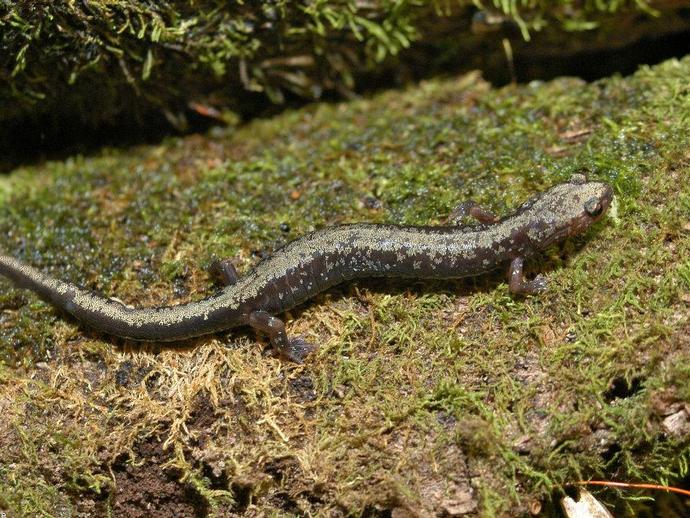January 19, 2021
It's time for today's edition of #BenInNature presented by our friends at Carter Bank & Trust!
Before we get into our number four pick for the rarest salamander in Virginia, it's worth asking the question: what does "rare" really mean?
When I decided to do Herp Month, I reached out to Jason Gibson of the Virginia Herpetological Society (who is also a VMNH Research Associate and a great friend of the museum) to get his opinion on my picks. He raised a very good question: which is considered more "rare," a species that can only be found in a small area of Virginia but is fairly common within that small area, or a species that has a wider distribution nationwide but is really hard to find in Virginia?
After much deliberation, I've decided to focus the rest of this week on salamanders that can only be found in Virginia. While they're not terribly hard to find within their small ranges if you know where to look, you can rest assured you won't find them anywhere else!
Having said all that, here's our pick for the fourth rarest salamander in Virginia: Plethodon hubrichti, the Peaks of Otter salamander!
These salamanders are restricted to a 10-mile stretch of the Peaks of Otter, the three mountain peaks in Bedford County that are part of the Blue Ridge Mountains. Within this ten mile stretch, however, these salamanders can be fairly abundant. According to the website of the Virginia Herpetological Society, one 1993 survey found 250 of these salamanders in a plot measuring 10x10 meters!
Despite that local abundance, the Peaks of Otter salamander is listed as a Federal Species at Risk by the U.S. Fish and Wildlife Service and is considered a Species of Concern by the Va. Department of Game and Inland Fisheries. They face a few different threats, including habitat loss and fragmentation due to logging; studies have shown that sites that have been clear-cut consistently host fewer of these salamanders than untouched forests. Additionally, the loss of forest canopy caused by invasive Gypsy moth larvae (Lymantria dispar) could prove to be a problem in the future.
Fortunately, the U.S. Forest Service and U.S. National Park Service have designated the entire range of these salamanders as a "Special Biological Area," and logging activity is either banned or restricted throughout their range. As a result, we'll hopefully have these guys around to enjoy for years to come!
Thank you to the Virginia Herpetological Society (www.virginiaherpetologicalsociety.com) for the use of this photo, which was taken by John White.
ABOUT #BenInNature
Social distancing can be difficult, but it presents a great opportunity to become reacquainted with nature. In this series of posts, Administrator of Science Ben Williams ventures outdoors to record a snapshot of the unique sights that can be found in the natural world. New updates are posted Monday - Friday, with previous posts highlighted on the weekends. This series of posts is made possible thanks to the support of VMNH Corporate Partner Carter Bank & Trust (www.cbtcares.com).
NATURE PHOTO IDENTIFICATIONS
If you discover something in nature that you would like help identifying, be sure to message us right here on Facebook with a picture (please include location and date of picture) and we'll have our experts help you identify it!

 Hours & Admissions
Hours & Admissions Directions
Directions

